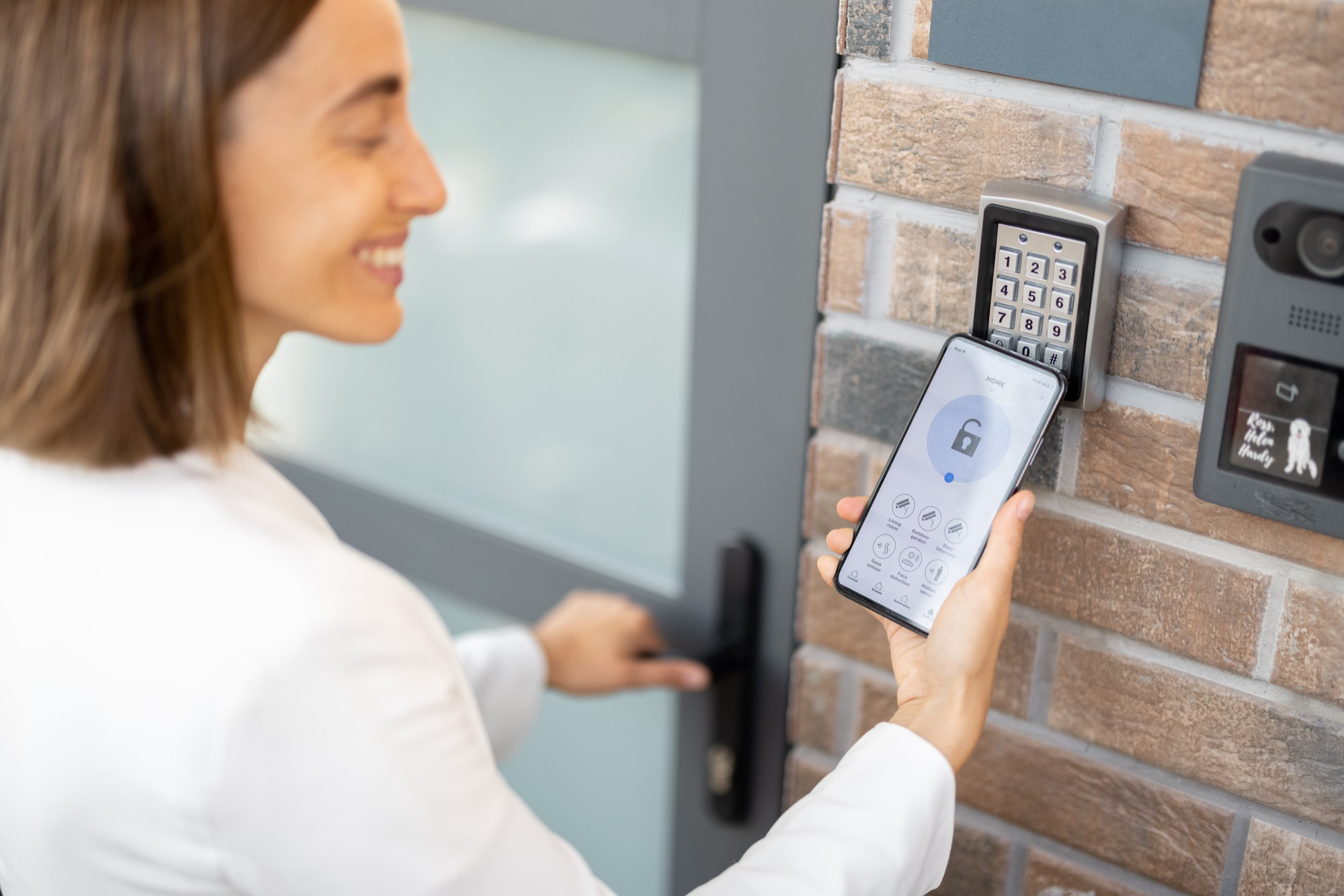Why Cellular Networks are Key to Improving Efficiency, Security, and Reliability in Modern Facilities
by Webbing Team
There are varying opinions on what should be considered the beginning of building automation, but one thing is certain: for the longest time, building management was based on manual operations and simple mechanics, but nowadays we use automated systems that manage everything from heating and cooling to security and energy.
Modern building automation systems (BAS, or building management systems, BMS) are centralized control tools designed to monitor and manage a building’s mechanical and electrical systems, such as heating, ventilation, air conditioning, lighting, security, and energy management. They are interconnected using the IP backbone and allow for remote management. While it may be tempting to view them through the lens of a “smart home” concept, it must be noted that the primary goal of these systems is not only to enhance the user experience but also to increase energy efficiency, extend the building’s lifespan, and ultimately make it more cost-effective.
The devices used in building automation vary greatly in their communication needs. Some systems transmit smaller amounts of data frequently, due to the nature of the devices involved or the complexity of the data. Some involve continuous data transfers or integration with cloud-based services that process and analyze large datasets. All of these systems need constant internet connection, and can utilize either wired or wireless connectivity. Cellular networks, with their widespread availability, offer several advantages for BAS.
Retrofitting old buildings with wired systems can be very challenging in terms of costs and efforts, since new wiring must be added to existing infrastructure. But even in new buildings, a wired connection is not that simple. Right from the initial concept of the building, the wiring of the required building automation equipment must be planned and maintained, and some ethernet cables and fieldbuses cannot be routed in the same wire chases as main power cables, so routing these cables also adds additional costs.
Additionally, because smart building automation depends on the internet, an outage can bring down automation systems throughout the entire facility. To stay operational, essential devices such as security cameras, lighting systems or door locks must have the ability to switch to an alternative internet connection. Cellular connectivity is the best failover option in case of a failure.
Let’s look at the main automation systems that can benefit from using cellular connectivity:

Smart HVAC: Optimizing Efficiency, Comfort, and Cost with Real-Time Connectivity
Cellular-enabled HVAC (Heating, Ventilation, and Air Conditioning) systems can transmit real-time data on temperature, humidity, air quality, and energy consumption to centralized cloud platforms or building management systems. Such setup allows facility managers to remotely adjust settings based on occupancy, time of day, or weather conditions – or totally automate it. While ensuring energy efficiency, reducing operational costs, and improving comfort for building occupants, it also supports predictive maintenance, as real-time data can identify system inefficiencies or potential issues before they lead to system failures.
These systems can also be used at commercial facilities: Walmart uses IoT sensors to remotely control its HVAC systems in stores, reducing energy consumption and utility costs without negatively impacting the customer experience.

Cellular-Enabled Security: Enhancing Surveillance, Access Control, and Reliability
Cellular connectivity is key for many security usage scenarios, as it allows remote monitoring of video surveillance cameras, easy implementation of access control systems, and alarm systems. The number of cellular-connected cameras is growing, forecast to reach 100,000,000 in the next 10 years. Cellular-enabled security systems can stream live video feeds, send real-time alerts in case of a security breach or update status reports directly to security personnel or property managers.
Moreover, cellular-connected IoT devices can provide advanced maintenance capabilities and more detailed system health monitoring within security systems, eliminating potential gaps in security and reducing the need for manual intervention and operational costs. It helps guarantee 24/7 security monitoring, enhances situational awareness, and improves response times. Cellular connectivity also allows systems to remain operational even if the building loses power or experiences network interruptions.

Smart Energy Management: Optimizing Efficiency with Cellular Connectivity
Energy meters and sensors within the building can transmit data via cellular networks to central monitoring systems. This data can include real-time energy consumption, peak demand times, and trends that help optimize energy usage.
Using cellular connectivity, they promote energy efficiency by providing actionable insights, enabling demand-response programs, and allowing for quick adjustments to minimize waste. It can also be used for monitoring and complying with energy regulations, improving sustainability.
Smart Elevators: Enhancing Safety, Efficiency, and Maintenance with Cellular Connectivity
The most obvious use case for cellular connectivity in elevators is real-time alerts and emergency communication, providing a quick response in the event of a malfunction or emergency. Besides that, elevators equipped with cellular-enabled sensors can continuously monitor key performance metrics such as speed, load, and temperature, and transmit data to a central monitoring system for predictive maintenance, to make sure that the elevators are operating efficiently and reduce downtime. In certain cases, cellular-enabled solutions may be used for video monitoring and preventing vandalism.

Key Connectivity Considerations for Building Automation
Given the wide variety of devices used in building automation, there are several key connectivity needs that are essential across most of them:
Reliability
In building automation, the system’s ability to remain operational, online, and functioning 24/7 is crucial—whether it’s a door lock, security camera, or an emergency communication system in an elevator.
Cellular networks are omnipresent, and most regions have multiple mobile operators, ensuring that sensors and devices can stay connected even if one network goes down or experiences instability. This is why cellular connectivity is often used as a backup, even for devices connected to the fixed infrastructure.
Coverage
Cellular networks are often the best connectivity option for deployments in rural locations and areas with no fixed lines of communication. However, coverage is one of the major concerns, as each mobile network inevitably has its weak spots. Ensuring sufficient coverage may require contracting with multiple operators, so this must be taken into consideration when enterprises deploy building automation systems.
Compliance with Regulations
In any country, there are many legislative acts that can impact the usage of some devices, such as security cameras. Along with strictly technical, there are regulations on data transfer, privacy and sovereignty. There also may be industry specific or local regulations that need to be complied with. To make it worse, legislation is always subject to change. That means that deploying certain devices as part of building automation systems may bring additional challenges if your connectivity solution is not adaptive enough to comply with regulations.

Webbing: Seamless, Scalable, and Reliable Connectivity for Building Automation
Webbing offers a connectivity solution that ensures global access to reliable and high-quality internet, with low latency and the best of class coverage. It provides secure and continuous internet connection, delivering a streamlined, centralized, and scalable means of deploying, controlling and monitoring all kinds of building automation devices.
As a global MVNO, Webbing’s network of 600+ mobile operators guarantees world-wide coverage. It allows IoT devices to roam on several carriers’ network in every region, solving the problem of weak spots that any mobile network may have and ensuring full coverage and continuous connectivity for all connected devices, even at remote locations.
Webbing is a global connectivity provider, with a distributed full-core network with local breakouts, multiple network solution, and data server redundancy that can provide connectivity stability and low latency. As such, Webbing’s network is well suited to support mission-critical, high-data consumption type of use cases, including payment transfers and video surveillance. It also allows for all types of localization – from IP traffic that remains in the country to designated profiles for emergency calls, so it’s easy to comply with local and regional connectivity regulation requirements. Webbing can also seamlessly localize deployments utilizing Remote SIM Provisioning even in heavily regulated markets.
A flexible approach to data packages allows us to tailor our connectivity offering for every customer based on the type of connected devices and their data consumption needs as well as the locations where the devices are used, aiming at overall optimization of the total cost of operations for the client.
Our solutions help enterprises overcome their connectivity problems and reduce time to market for global deployments, providing the benefits of roaming with multiple carrier options in every country, and seamless transition between carriers, while maintaining low rates and low latency on a global scale with a single SIM.
Reach out to learn more.




